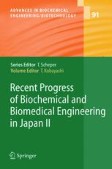Search
Search Results
-
Hydrogels for Musculoskeletal Tissue Engineering
The advancements in scaffold-supported cell therapy for musculoskeletal tissue engineering have been truly dramatic in the last couple of decades....
-
Analysis and Architecture of Clinical Workflow Systems using Agent-Oriented Lifecycle Models
Healthcare executives are grappling with a climate of great change in the healthcare industry. This is coming from a number of sources. First, there...
-
Current Status of Computerized Decision Support Systems in Mammography
Breast cancer is one of the most devastating and deadly diseases for women today. Despite advances in cancer treatment, early mammographic detection...
-
Aging and mitochondrial dysfunction in the filamentous fungus Podospora anserina
In the filamentous fungus Podospora anserina, mitochondria play a paramount role in life span control and aging. During aging, these organelles...
-
The human Werner Syndrome as a model system for aging
The aging process is one of the most challenging biological pathways to understand. Applications of model systems for aging have contributed...
-
Aging and the programmed death phenomena
Biochemical mechanisms of the programmed death phenomena are considered at levels of unicellular organisms, mitochondria, cells, groups of cells, and...
-
Application of Knowledge Information Processing Methods to Biochemical Engineering, Biomedical and Bioinformatics Fields
In biochemical and biomedical engineering fields there are a variety of phenomena with many complex chemical reactions, in which many genes and...
-
Cell-free Protein Synthesis Systems: Increasing their Performance and Applications
The Escherichia coli cell-free protein synthesis system can now be used for various proteins that need special requirements, such as disulfide bond...
-
Regeneration of Articular Cartilage
Loss of articular cartilage from the ends of bones forming diarthrodial joints can be the source of profound pain and disability, and eventually lead...
-
Bioprocess Monitoring Using Near-Infrared Spectroscopy
Near-infrared spectroscopy (NIR) is a nondestructive analytical technique that has been used for simultaneous prediction of the concentrations of...
-
Metabolic Flux Analysis Based on 13C-Labeling Experiments and Integration of the Information with Gene and Protein Expression Patterns
The recent progress on metabolic systems engineering was reviewed, in particular focusing on the metabolic flux analysis (MFA) based on the...
-
Transgenic Birds for the Production of Recombinant Proteins
Transgenic birds were expected to be an excellent transgenic bioreactor for the production of recombinant pharmaceutical proteins. However, the only...
-
Tissue Engineering Strategies for Bone Regeneration
Bone loss due to trauma or disease is an increasingly serious health problem. Current clinical treatments for critical-sized defects are problematic...
-
Recent Progress in Microbial Cultivation Techniques
Recent advances in the improvement of microbial cultivation are reviewed, with emphasis on biochemical engineering techniques as a means of obtaining...
-
High Rate Production of Hydrogen/Methane from Various Substrates and Wastes
To treat soluble and solid wastes and recover energy from them, high rate methane fermentation, especially using the UASB (upflow anaerobic sludge...
-
A position-enhanced sequential feature encoding model for lung infections and lymphoma classification on CT images
PurposeDifferentiating pulmonary lymphoma from lung infections using CT images is challenging. Existing deep neural network-based lung CT...

-
Polymeric Systems for Bioinspired Delivery of Angiogenic Molecules
Growth factors are increasingly utilized to promote regeneration of lost or compromised tissues and organs. However, current strategies applying...
-
Biopolyesters in Tissue Engineering Applications
Tissue engineering is a rapidly growing interdisciplinary field of research focused on the development of vital autologous tissue through the use...
-
Interfaces to Control Cell-Biomaterial Adhesive Interactions
Cell adhesion to adsorbed proteins and adhesive sequences engineered on surfaces is crucial to cellular and host responses to implanted devices,...
-
Case-based Medical Informatics
The “applied” nature distinguishes applied sciences from theoretical sciences. To emphasize this distinction, we begin with a general, meta-level...
